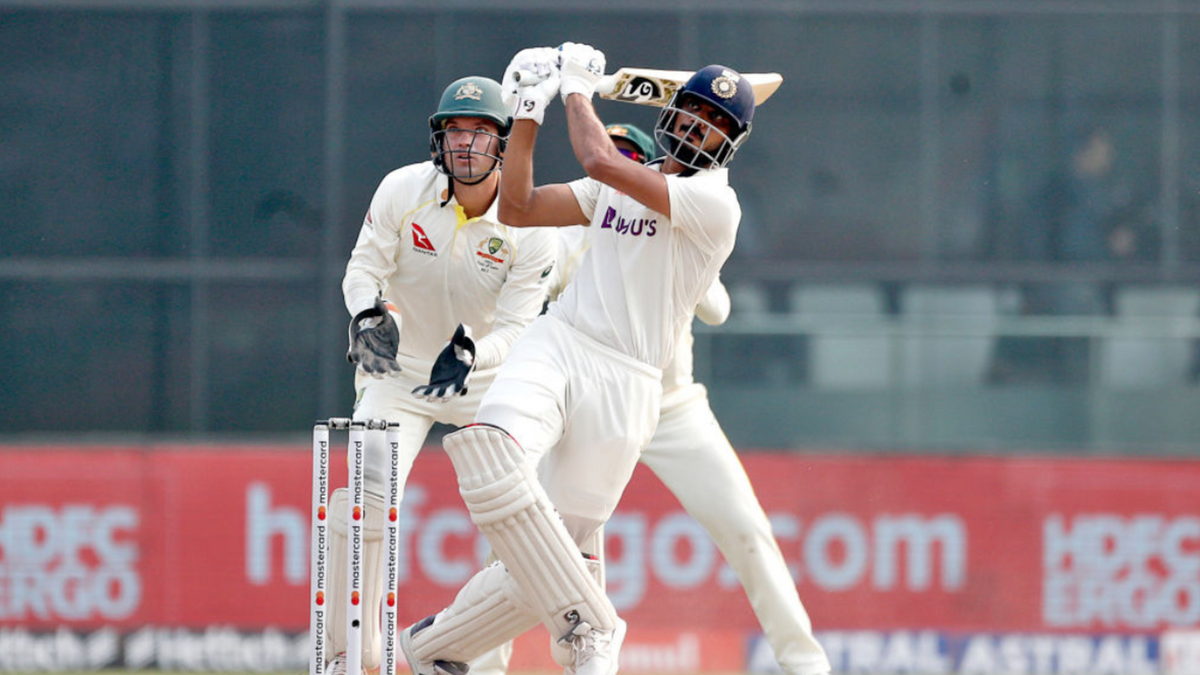
Axar Patel made his Test debut in the second match of the series against England in 2021 as a like-for-like replacement for Ravindra Jadeja. His debut series made the world believe that Test cricket was easy.
Since Jadeja made his Test debut, he had missed only one home Test series up until 2021. In February of that year he was going to miss his second after picking up an injury on the Australian tour just before another Indian summer. At that point, no one knew that this injury was about to give rise to one of the most bizarre Test careers of recent times.
On dusty pitches offering square turn and with a visiting batting lineup short on confidence, Axar took 27 wickets in his first three Test matches with his accurate round-arm darts. His average from those matches was 10.59, with a wicket every 28.3 balls.
He picked four 5-wicket hauls in his first six innings with the ball, with his worst outing being 2-40 off 20 overs. Surely it had to be beginner’s luck. Surely this was not sustainable. But sustain it he did. To a certain degree, at least.
His next five Test matches brought him 20 more wickets and he stood at 47 wickets after eight games, with a bowling average of 14.29. Only two players in the history of Test cricket had taken more wickets than him at a better bowling average by that point in their careers. Those two players had last played international cricket in the 19th century. Axar needed three more wickets in his next game to become the joint-fastest Indian bowler to 50 Test wickets along with Ravichandran Ashwin. Surely he’d get there.
He didn’t. He took not one, not two, but four matches to take his next three wickets. Such a dramatic drop off drew questions about his future role in the India side. Was Axar Patel finally finding out that Test cricket was hard? No. He was just making a switch from being excellent with the ball to being excellent with the bat.
He ended this year’s Border-Gavaskar Trophy as the third-highest run-getter overall, with 264 runs in five innings at an average of 88, the highest for any batter in the series. And this came in a series where run-scoring was next to impossible in three of the four test matches.
Axar regularly came in with his team in precarious situations and bailed them out of trouble with an air of confidence and a sense of clarity that you wouldn’t expect of him with the bat. His batting has been on a steady upward curve off late and this series has confirmed that.
What direction does his Test career take now?
While you’d think a player developing his skillsets and putting in better-than-expected performances for his team would ease matters for them, it isn’t exactly the case with Axar. That is what makes his Test career – both what has been and what can be – bizarre.
If the last couple of matches of the India-Australia Test series were any indication, it’s that Axar Patel is now too good a batter to bat at nine, or even eight, for that matter. He was left stranded with no partners at least twice in the series, and India wouldn’t want to continue doing that going ahead.
This leaves them with one choice – play Axar at seven and move KS Bharat down to eight. But that will be only for home Tests, which India next play in January next year. Chances are as well that Rishabh Pant recovers and is back playing for India by that time. That will mean that the highest Axar can get up to in the batting order is No.8.
As for away games, he is currently not even in contention for the first XI. India rarely pick two spinners in Test matches in ‘SENA’ countries, and even if they do, you can’t imagine them looking past Jadeja and Ashwin, with Jadeja being the first choice.
In an ideal world, in his current avatar, Axar would have been batting in the top-six and playing as the first-choice left-arm spinner in almost any Test team in the world. But like many gifted players in the past, he has had the misfortune of being at the wrong place at the wrong time. There are no opportunities in the Indian Test team currently that will allow proper utilisation of Axar’s skills and career trajectory.
We have seen a few players completely transform themselves from bowling all-rounders to batting all-rounders or even pure batters. Cameron White, James Franklin, Sanath Jayasuriya, Shoaib Malik, and the most extreme transformation of all – Steve Smith, to name a few.
It will be too early to say that Axar is on a similar path based on just one series, but given the lack of potential opportunities and his penchant for the bizarre, don’t be surprised if his name gets added to that list.








